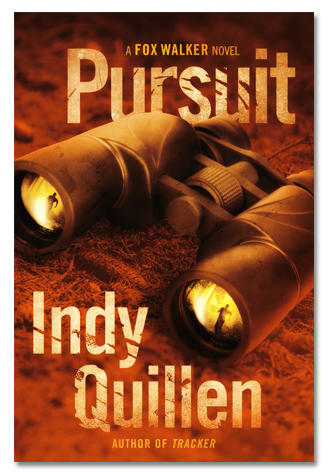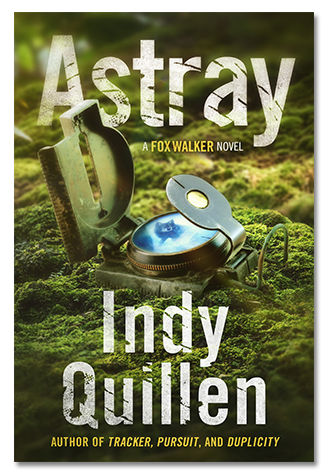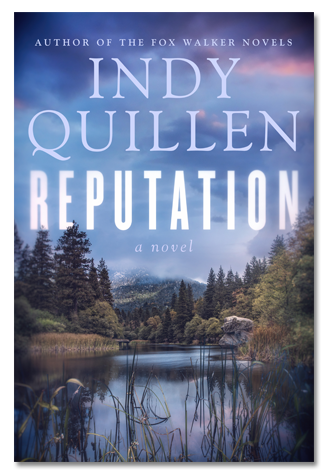An Evolution of Primitive Camping
Updated 5/13/2022
My husband and I have done our fair share of backpacking-style camping.
Backpacking means that whatever you can carry on your back is what you have for camping as you travel into remote locations or wilderness.
 The cool part was it allowed us to hike into areas that weren’t accessible by car, such as Half Dome in Yosemite National Park. We met other hikers from all over the world. And there was something liberating about knowing we carried everything we needed right on our backs. It fed into my desire of being self-sufficient.
The cool part was it allowed us to hike into areas that weren’t accessible by car, such as Half Dome in Yosemite National Park. We met other hikers from all over the world. And there was something liberating about knowing we carried everything we needed right on our backs. It fed into my desire of being self-sufficient.
Even after we stopped back-packing to our camping sites, we continued to use our small lightweight tent for twenty years, because it has such a small footprint for set-up. We have still kept the tent and the small backpacker one-burner stove because there are times when we want to set up a quick site and spend only a night. It gives us options. And it’s always nice to have a back-up system in place.
But now we are older.
For a few years we were doing longer trips, more often, and staying at one campsite for multiple days. And my back isn’t what it used to be. So after spending ten days on a road camping trip in Utah with our little tent and stove we decided it was time to make some major changes. We weren’t quite ready to make the move to a campervan, pop-up or small RV (yet), so car camping was the perfect next step for us.
The Advantages of Car Camping
 By using a vehicle to carry our equipment, instead of our backs, we were able to add a larger tent that could hold two sleeping cots. Not only did it allow for comfy sleeping up off the ground (especially nice when it rains), it also gave us a place to retreat to in case of inclement weather—or insane insects. We added a small, portable folding camp table that fits between our cots, so we could sit and eat, read or play cards by using our cots as chairs. The tent is tall enough to stand and change clothes and move about. A big improvement from our back-packing tent where we had to lay down to change clothes.
By using a vehicle to carry our equipment, instead of our backs, we were able to add a larger tent that could hold two sleeping cots. Not only did it allow for comfy sleeping up off the ground (especially nice when it rains), it also gave us a place to retreat to in case of inclement weather—or insane insects. We added a small, portable folding camp table that fits between our cots, so we could sit and eat, read or play cards by using our cots as chairs. The tent is tall enough to stand and change clothes and move about. A big improvement from our back-packing tent where we had to lay down to change clothes.
The particular tent we purchased has a 4-foot vestibule that either rolls up to create a ‘front porch” for shade, or zips closed to create a little room off the front of the tent. We opted to purchase a compact portable toilet to set in this room (it implements a 5-gallon bucket system). This has come in handy in inclement weather or late at night when you might not want to exit the tent and go wandering around in the woods, or desert, to pee.
Instead of our tiny backpacker one-burner stove, or the old unwieldy white gas camp stove we had, we now own an efficient 2-burner propane camp stove. After doing research we purchased the Everest Camp Chef Mountain Series stove. We love it. I’d recommend it to anyone. It does great at higher elevations and so it does heat faster and uses less fuel than most stoves we’ve used in the past.
We also invested in comfortable camp chairs, for relaxing around a camp fire in the evening. Speaking of fire. We purchased a portable folding fire ring in case our campsite doesn’t provide one and doesn’t allow a fire without one. And for the desert, or rainy weather, we have an easy to pop-up canopy. I have to admit that this all felt like luxury to us!
Our Next Evolution in Car Camping
After years of car camping in this fashion and enjoying it, our camping life has changed yet again. Instead of the long road trips, we find ourselves doing lots of extended weekends and shorter camping trips. Setting up that big tent, the cots, and canopy proved too time consuming for the short amount of time we had for camping, and our gear took up far too much space. We began to look for an alternative. Although at this point we’d love to have a small pull-behind camper, we currently live where the HOA doesn’t allow us to park one in our drive. So until we find some land to purchase, we had to find an alternative.
We wanted to downsize and yet still have a comfortable sleeping area (for my back) so we did some research and decided to build a portable custom sleeping platform that we could insert into the back of our 2018 Subaru Outback. We made it a raised platform so that we could add drawers underneath for storage.  It only took a couple of weekends to purchase supplies and build it. And it turned out great! We added a small futon pad and use our sleeping bags for a comforter. Cosy warm! And, it gave us the metal car body (just like a camper) as protection against weather and animals—and added plus when camping away from commercial campgrounds. The sleeping area is fantastic. The downside is there is only room for sleeping.
It only took a couple of weekends to purchase supplies and build it. And it turned out great! We added a small futon pad and use our sleeping bags for a comforter. Cosy warm! And, it gave us the metal car body (just like a camper) as protection against weather and animals—and added plus when camping away from commercial campgrounds. The sleeping area is fantastic. The downside is there is only room for sleeping.
We still needed a place to stand and wash and dress. We tried using a small, inexpensive cabana that attached to the back of the vehicle. But it was a bother getting in and out of, or gaining access to the storage drawers under the bed platform. Plus, although we kept the pull-out awning attached to our roof rack for a bit of protection in bad weather, we soon missed having an enclosed area to shelter in during the late evening hours or inclement weather. And even though we downsized to a one burner campstove (that uses propane or butane), having the bed set up in back of the vehicle left us with limited places to store items like food, our cooler, extra clothes and other gear, where they would be handy to get to vs getting into the roof carrier. So then, we were back needing a “tent” scenario.
We tried using a small, inexpensive cabana that attached to the back of the vehicle. But it was a bother getting in and out of, or gaining access to the storage drawers under the bed platform. Plus, although we kept the pull-out awning attached to our roof rack for a bit of protection in bad weather, we soon missed having an enclosed area to shelter in during the late evening hours or inclement weather. And even though we downsized to a one burner campstove (that uses propane or butane), having the bed set up in back of the vehicle left us with limited places to store items like food, our cooler, extra clothes and other gear, where they would be handy to get to vs getting into the roof carrier. So then, we were back needing a “tent” scenario.
The Current Perfect Solution
 After much research, we found the perfect solution—for our current scenario. It’s the Napier Backroadz SUV Tent. Unlike our large foot-print, cumbersome tent that held two full-size cots, this tent is a quick and easy set-up (8 -10 minutes tops). Although you can use it like any other standard tent, one side is built to allow you to open and securely attach it to the back of your open SUV.
After much research, we found the perfect solution—for our current scenario. It’s the Napier Backroadz SUV Tent. Unlike our large foot-print, cumbersome tent that held two full-size cots, this tent is a quick and easy set-up (8 -10 minutes tops). Although you can use it like any other standard tent, one side is built to allow you to open and securely attach it to the back of your open SUV.  No more setting up cots, as the interior of the tent gives us full access to the storage drawers and our cozy sleeping area within the vehicle. The tent is roomy and gives us plenty of space where we can fully stand up and dress, store all our food and cooler, and keep gear out of sight, yet handy. Once we retire from the campfire at night, we set up a camp table and camp chairs for an evening of relaxing … or a place for breakfast in bad weather. The attachment is quite ingenious, easily attached to the SUV and if done correctly keeps out the rain and wind. It’s the closest setup we could find that gives us all the advantages of a hard-bodied camper without having a camper. It’s taken us a while to find the perfect setup for us—for now. I hope it inspires some of you who are looking for something similar.
No more setting up cots, as the interior of the tent gives us full access to the storage drawers and our cozy sleeping area within the vehicle. The tent is roomy and gives us plenty of space where we can fully stand up and dress, store all our food and cooler, and keep gear out of sight, yet handy. Once we retire from the campfire at night, we set up a camp table and camp chairs for an evening of relaxing … or a place for breakfast in bad weather. The attachment is quite ingenious, easily attached to the SUV and if done correctly keeps out the rain and wind. It’s the closest setup we could find that gives us all the advantages of a hard-bodied camper without having a camper. It’s taken us a while to find the perfect setup for us—for now. I hope it inspires some of you who are looking for something similar.
Some of you might think this means we’ve moved from primitive camping to only camping in parks and commercial campsites. But that’s far from being the case.
Car Camping and Being Self-Sufficient
 This set up has allowed us to make ourselves pretty darn self-sufficient—which allows us to spend more time out in the National Forests here in Washington, or on *BLM (Bureau of Land Management) land. BLM camping affords us privacy, peace and quiet as we are usually all alone out in the wide-open land and all those stars at night. Even though we’ve brought along all the comforts of home with us, being out away from the city still allows me to practice my survival skills. It’s a nice blend of convenience, so we have time to relax in nature, and the opportunity to still learn new things.
This set up has allowed us to make ourselves pretty darn self-sufficient—which allows us to spend more time out in the National Forests here in Washington, or on *BLM (Bureau of Land Management) land. BLM camping affords us privacy, peace and quiet as we are usually all alone out in the wide-open land and all those stars at night. Even though we’ve brought along all the comforts of home with us, being out away from the city still allows me to practice my survival skills. It’s a nice blend of convenience, so we have time to relax in nature, and the opportunity to still learn new things.
Primitive camping on BLM land, or disperse camping in National Forests, also means you need to plan ahead. There will be no source for safe drinking water (maybe no water at all), and no toilet facilities. There are different degrees of primitive you can do here. We’ve done a lot of desert camping, so we have ways to carry water with us, such as water bricks (which hold 3.5 gallons of water). I also created a washing station for ease of cleaning up dishes—and us. And we now have that compact, portable toilet. But we’ve gone as primitive as using a trowel to dig a hole. But we always, always carry toilet paper with us – even if camping in a park that has toilets. They often run out of paper. We have the portable fire ring with us, to make sure our campfire is a safe one and complies with the rules of the area. And when on BLM land, we carry out our leftover coals and ashes.
Remember: leave behind only your footprints!
I’m glad we had the opportunity to go back-packing. It was an awesome experience. But now as we enter this new phase in our lives, I’m excited that we’ve found a way to still get out and be in nature as often as possible.
*What is BLM Land?
If you aren’t familiar with this, it’s deemed public land that is free for use by us citizens (for the most part) and managed (I say that loosely) by the government. It doesn’t mean you can always go out to all areas, or always do whatever you want. There are often rules for each location, such as no open fires (please bring your own fire-ring), because of fire hazards. Some places allow off-roading, while others do not. Some states even allow you to bring in your guns and rifles for target practicing. Educate yourself before entering the area of your choice. Most BLM lands are designated on maps that you can pick up at the AAA. I suggest you do a little research online before you head out there.


 Being outside in nature is the most basic part of who I am. Besides gaining knowledge about wildlife, I learn lessons about who I am, and surprise myself about what I am capable of achieving. Nature continually inspires me. It is a part of all my writings, no matter the genre or subject matter.
Being outside in nature is the most basic part of who I am. Besides gaining knowledge about wildlife, I learn lessons about who I am, and surprise myself about what I am capable of achieving. Nature continually inspires me. It is a part of all my writings, no matter the genre or subject matter. 





That’s my style. You’d be amazed at how much gear I can fit into my 2006 PT Cruiser w/ a car-top carrier. I carry way more than I need.
I’m big on my tent, the Coleman Picton II. It’s 10×10 1/2 and is very comfy for 1 or 2. They say it could sleep 8, but that would be sardine-style! It’s designed to keep you warm and dry up to 45 mph, believe it or not. If you’re not expecting rain, it’s cool to keep the rain fly off.
The hgt is just over 5′ so it’s OK for me to change clothes in. I’m not tall at all. I don’t like sleeping bags or cots, though i have a good cot. I’m into sleeping in hammocks or recliners. I have a camp recliner that works very well; it’s the camp equivalent of a Lazy Boy (but can be carried by 1 person) and has the added bonus of eliminating the worry of acid reflux being a big deal and spoiling my camping fun. the docs tell me to never sleep laying completely horizontal anyway; so a camping recliner is a great way to go!
One other bonus: if it didn’t need to use the rain fly, in a recliner I can see the stars through the tent ceiling! It’s a great thing, one of the reasons I camp so much! Seeing the boughs of trees, same awesome pay-off!
I have two different one-burner stoves, one propane, the other uses the “shorty” composite propane/butane fuel. That one is so tiny when folded for travel. Most cooking, though is w/ my Texsport 2-burner; you could think of this as a “store brand” Coleman 2 burner stove. Just a bit cheaper. It’s been a champ. It’s ez to clean and when folded is real ez to carry around. Uses the 1 lb propane tanks you can buy anywhere; if you have the adapter, you could use your big 4.5 lb tank.
Don’t know why I felt you or any of your readers needed to have that much detail about my camping gear, but there it is! Looks like i’ve got my next blog posting about 2/3 written already!
Hi Ben – Thanks so much for sharing some great camping info! I’m sure my readers will appreciate it as much as I do. One of my favorite things to do when camping is seeing all the innovative ways other campers are setting up their sites. I get so many cool ideas! The comping recliner sounds awesome! As much as we hope to put together a campervan in the near future, we’ll never want to fully stop tent camping. There is just something special about it. Thanks again for taking time to comment here!